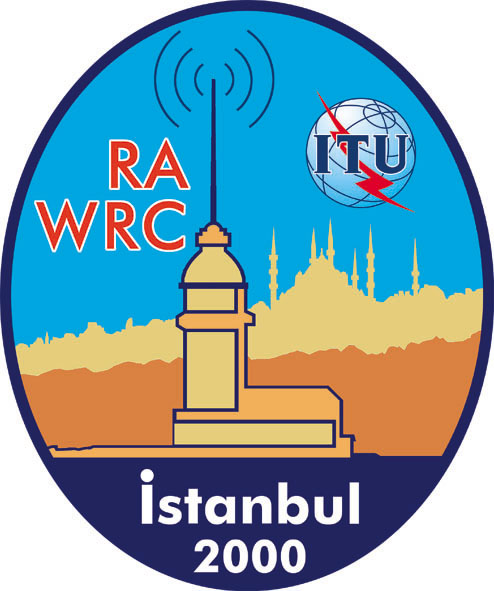
World Radiocommunication Conference 2000
 |
World Radiocommunication Conference 2000 |
RESOLUTION [COM5/26] (WRC-2000)
Use of additional frequency bands for the satellite component of IMT-2000
The World Radiocommunication Conference (Istanbul, 2000),
considering
a) that the bands 1 980-2 010 MHz and 2 170-2 200 MHz are identified for use by the satellite component of International Mobile Telecommunications-2000 (IMT-2000) through No. S5.388 and Resolution 212 (Rev.WRC-97);
b) Resolutions 212 (Rev.WRC-97), [COM5/24] (WRC-2000) and [COM5/25] (WRC-2000) on the implementation of the terrestrial and satellite components of IMT-2000;
c) that the bands 1 525-1 544 MHz, 1 545-1 559 MHz, 1 610-1 626.5 MHz, 1 626.5-1 645.5 MHz, 1 646.5-1 660.5 MHz, 2 483.5-2 500 MHz, 2 500-2 520 MHz and 2 670-2 690 MHz are allocated on a co-primary basis to the mobile-satellite service and other services in accordance with the Radio Regulations;
d) that distress, urgency and safety communications of the Global Maritime Distress and Safety System and the aeronautical mobile-satellite (R) service have priority over all other mobile-satellite service communications in accordance with Nos. S5.353A and S5.357A,
recognizing
a) that services such as broadcasting-satellite, broadcasting-satellite (sound), mobile-satellite, fixed (including point-to-multipoint distribution/communication systems) and mobile are in operation or planned in the band 2 500-2 690 MHz, or in portions of that band;
b) that other services such as the mobile service and radiodetermination-satellite service are in operation or planned, in accordance with the Table of Frequency Allocations, in the bands 1 525-1 559/1 626.5-1 660.5 MHz and 1 610-1 626.5/2 483.5-2 500 MHz, or in portions of those bands, and that those bands, or portions thereof, are intensively used in some countries by applications other than the IMT-2000 satellite component, and the sharing studies within ITU-R are not finished;
c) that studies of potential sharing and coordination between the satellite component of IMT-2000 and the terrestrial component of IMT-2000, mobile-satellite service applications and other high-density applications in other services such as point-to-multipoint communication/distribution systems in the bands 2 500-2 520 MHz and 2 670-2 690 MHz bands are not finished;
d) that the bands 2 520-2 535 MHz and 2 655-2 670 MHz are allocated to the mobile-satellite, except aeronautical mobile-satellite, service for operation limited to within national boundaries pursuant to Nos. S5.403 and S5.420;
e) Resolution ITU-R 47 on studies under way on satellite radio transmission technologies for IMT-2000,
resolves
1 that, in addition to the frequency bands indicated in considering a) and resolves 2, the frequency bands 1 525-1 544 MHz, 1 545-1 559 MHz, 1 610-1 626.5 MHz, 1 626.5-1 645.5 MHz, 1 646.5-1 660.5 MHz and 2 483.5-2 500 MHz may be used by administrations wishing to implement the satellite component of IMT-2000, subject to the regulatory provisions related to the mobile-satellite service in these frequency bands;
2 that the bands 2 500-2 520 MHz and 2 670-2 690 MHz as identified for IMT-2000 in No. S5.AAA and allocated to the mobile-satellite service may be used by administrations wishing to implement the satellite component of IMT-2000; however, depending on market developments, it may be possible in the longer term for bands 2 500-2 520 MHz and 2 670-2 690 MHz to be used by the terrestrial component of IMT-2000;
3 that this identification of frequency bands for the satellite component of IMT-2000 does not preclude the use of these bands by any applications of the services to which they are allocated and does not establish priority in the Radio Regulations,
invites ITU-R
1 to study the sharing and coordination issues in the above bands related to use of the mobile-satellite service allocations for the satellite component of IMT-2000 and the use of this spectrum by the other allocated services, including the radiodetermination-satellite service;
2 to report the results of these studies to a future world radiocommunication conference,
instructs the Director of the Radiocommunication Bureau
to facilitate to the greatest extent possible the completion of these studies.